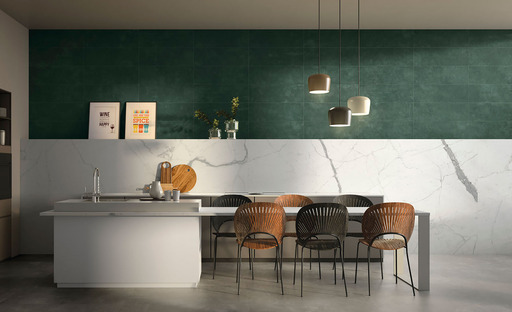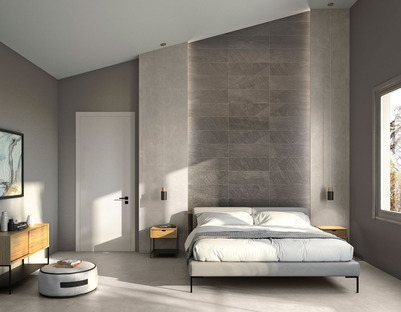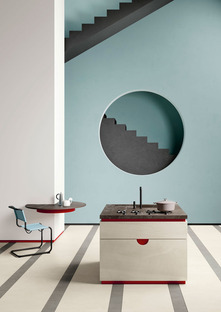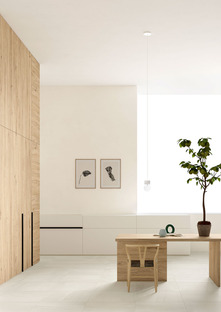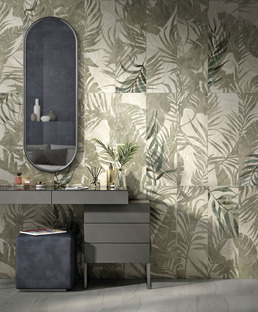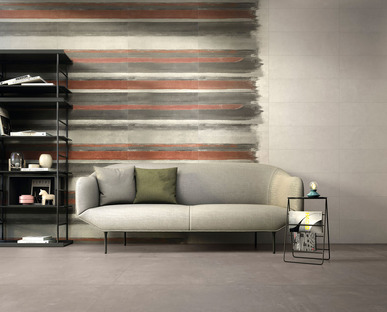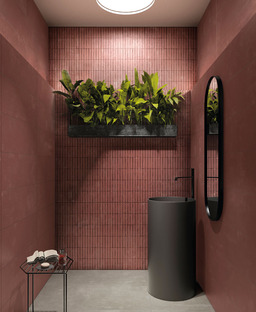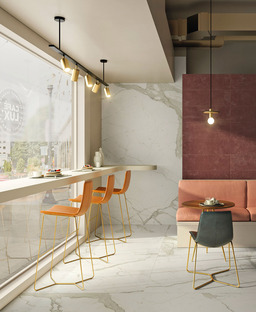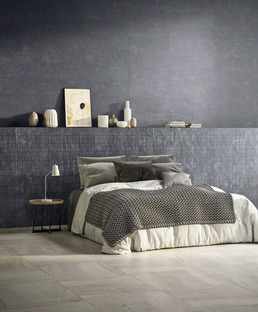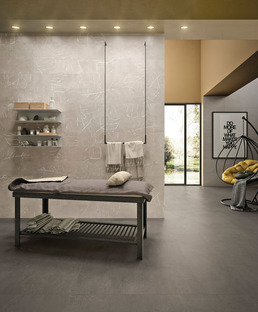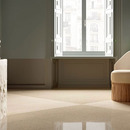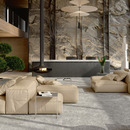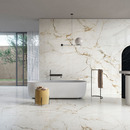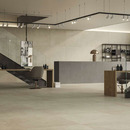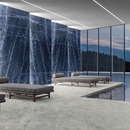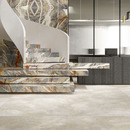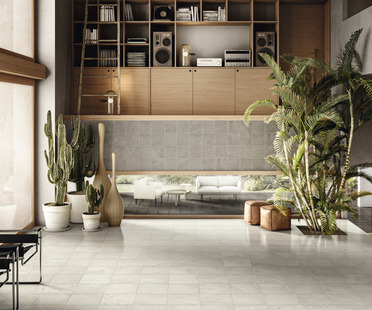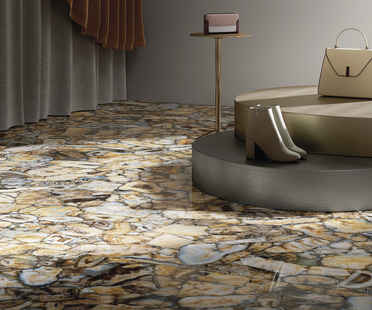27-04-2021
ACTIVE SURFACES™ ceramics: a concrete solution for fighting Covid-19
Green Architecture, rivestimenti, Interior Floor,
tabletop, ACTIVE SURFACES, ventilated facades, Sustainability, Grandi formati, Iris Ceramica Group, top bathroom, Medical Emergency Covid19, Kitchen countertop,
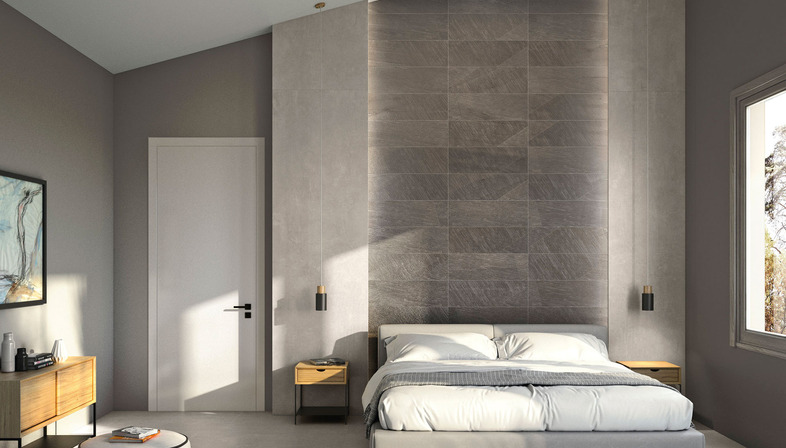
The design and creation of spaces taking personal wellness into account is one of the most important new developments in contemporary architecture: a series of very important aspects aimed at protecting the health of individuals and communities, especially important at the time of the Covid epidemic.
In the post Covid-19 world, high overall environmental quality is essential in homes, workplaces, and public spaces, and in any kind of place where people gather together.
Environmental quality primarily takes into consideration such essential factors as air and light, with improvements to the most exposed elements with which we come into contact, such as surfaces and furnishings.
The fragility of many of our buildings, including homes and the adjacent outdoor areas, has been revealed as a result of the pandemic’s effect on our lives.
Structures such as schools and hospitals, for example, have been the focus of a lot of discussion for their inability to respond to the emergency first and then continue to fulfil their normal roles. The list of such places is inevitably a long one, also including restaurants, gyms and all kinds of places where people meet and spend time together.
So how can we respond to this new requirement for everyday living?
One of the most important responses architecture and design can offer is to put technology to work, in the form of the practical solutions offered by new materials such as beautiful high-tech ceramic.
A key material in the world of contemporary surface coverings and furnishings, high-tech ceramic guarantees a vast range of practical and truly effective solutions, also assisting with cleaning and sanitisation of spaces. This has to do with a number of properties of high-tech porcelain, such as its non-absorbency and extremely easy cleaning.
On the basis of these top-level technical and aesthetic properties, the Iris Ceramica Group, which has always been a pioneer in the areas of sustainability and innovation, has in recent years perfected a new method of production for making materials containing an active ingredient which contributes to improvement of the quality of the environment.
ACTIVE SURFACES™ advanced ceramic surfaces have properties capable of reducing the bacteria, viruses and pollutants that cause so much damage in the world’s cities today.
ACTIVE SURFACES™ advanced ceramic surfaces have properties capable of reducing the bacteria, viruses and pollutants that cause so much damage in the world’s cities today.
ACTIVE SURFACES™ for fighting Covid-19
The Iris Ceramica Group’s ACTIVE SURFACES™ are also in the front lines of combating problems linked with Covid-19.
Ceramic surfaces were the subject of an important study by the Department of Biomedical, Surgical and Dental Sciences and the Department of Biomedical Health Sciences at Milan University focusing on verification of their antiviral effect in fighting the SARS-CoV-2 coronavirus (the cause of Covid-19).
Ceramic surfaces were the subject of an important study by the Department of Biomedical, Surgical and Dental Sciences and the Department of Biomedical Health Sciences at Milan University focusing on verification of their antiviral effect in fighting the SARS-CoV-2 coronavirus (the cause of Covid-19).
The study was conducted by the Iris Ceramica Group’s Active Research and Development Department in partnership with the authoritative technical and scientific committee of the two departments of Milan University. The data obtained attest to the "ability of ACTIVE SURFACES™ to eliminate SARS-CoV-2 – responsible for Covid-19 – at 94% after only 4 hours of exposure to low intensity UV light.
This significant result is added to the ISO certifications (ISO 21702 - ISO 18061) already obtained by the material: those relating to the four well-known viral strains (pandemic flu H1N1 and H3N2, Enterovirus 71 and Poliovirus) and others in the antibacterial field, for example against antibiotic-resistant bacteria (ISO 27447 - ISO 22196)".
This significant result is added to the ISO certifications (ISO 21702 - ISO 18061) already obtained by the material: those relating to the four well-known viral strains (pandemic flu H1N1 and H3N2, Enterovirus 71 and Poliovirus) and others in the antibacterial field, for example against antibiotic-resistant bacteria (ISO 27447 - ISO 22196)".
How ACTIVE SURFACES™ work
ACTIVE SURFACES™ ceramics are described as "eco-active", a neologism indicating "a product that works to improve human wellbeing".
The scientific principle behind these high-performing ceramic slabs is “photocatalysis”, a term made up of the Greek words “photo”, meaning light, and “catalysis”, a natural reaction which is accelerated by the presence of one or more additional components.
In the case of the ceramic slab, this additional component is titanium dioxide (TiO2), fixed onto the slab at very high temperatures.
In short, in the mere natural presence of light (from natural or artificial sources), moisture and air, TiO2 activates photocatalysis, a natural process in which "a high concentration of hydroxyl radicals forms on the surfaces of ACTIVE ceramic to eliminate harmful microbes".
In addition to the results of tests against Covid-19, the principal benefits of ACTIVE SURFACES™ ceramic materials may be summed up as follows:
1) efficacy against bacteria, even destroying antibiotic-resistant bacteria or – MRSA;
2) anti-pollutant action, eliminating harmful substances from the air around them (NOx and VOCs, volatile organic compounds);
3) self-cleaning action, permitting easy removal of dirt and thereby reducing the need for use of aggressive cleaning products;
4) odour-fighting effectiveness, degrading the principal odoriferous organic molecules responsible for foul odours, for a more comfortable environment.
The eco-active capacity of ACTIVE SURFACES™ is also effective in LED light and in the dark.
For all these reasons, the Iris Ceramica Group’s ACTIVE SURFACES™ ceramic slabs offer a concrete, high-performing answer for contemporary surfaces for all kinds of uses.
Marco Privato










